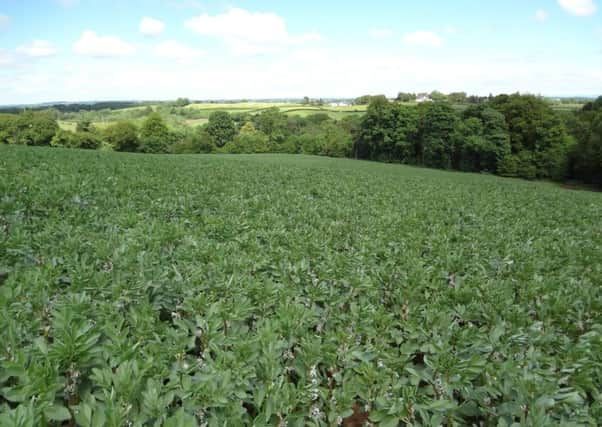DAERA Management Notes: Crops


Most winter cereals are due nitrogen at early stem extension (growth stage 30-32), barley normally reaching this stage ahead of wheat. If not already applied aim to include sulphur at a total rate of 25-40 kg per hectare of SO3 for all cereals, remembering applications of organic manures will have supplied some of this requirement. This spring do not underestimate the nutrients from autumn applied manures. Lower than normal winter rainfall means there is less likelihood nutrients such as nitrogen and sulphur have been leached out of the root zone and in many cases should still be readily available to winter crops.
Inspect crops for any recently emerged broad leaved weeds applying top-up herbicide as soon as conditions allow. As with all pesticides adhere to product labels paying particular attention to latest application timings, sequences with other herbicides and approved tank mixes with other products. A moment spent testing tank mixes in a bucket ensures products are physically compatible before adding to the sprayer but is not an indication of crop safety of the mixture.
Disease control
Advertisement
Hide AdAdvertisement
Hide AdThe relatively mild and good growing winter has resulted in thick crops of winter barley and generally high levels of foliar disease. Mildew and Rhynchosporium are widespread and where infection is severe keep fungicide rates high particularly where T0 fungicide was not applied or T1 has still to be applied. Apply the follow up T2 fungicide around growth stage 39 when the flag leaf has fully emerged and the first few awns are appearing, no later than four weeks from the T1 timing. At both T1 and T2 timings best performance is achieved with an SDHI or prothioconazole in the product mix. Strobilurins and other azoles actives aren’t as strong but still offer useful protection in mixes where crops are clean or disease pressure is lower.
By now some winter wheat will have received a T0 fungicide. Where this has not been applied the T1 will be critical to get on top of Septoria and should be applied around growth stage 32 ideally when leaf 3 is emerging. For the T1 use robust rates of Triazole, for example Ignite or Proline mixed with an SDHI and multisite protectant.
Mildew is easily found in all cereals this year, and if present, add a specific mildewicide to the tank mix at the next fungicide timing. As mentioned many winter cereals particularly barley are thick and pose a high lodging risk. If so early stem extension is the most effective timing to shorten straw so include PGR, for example Chlormequat and Moddus with T1 fungicides. For thick, early sown winter barley a split application may be necessary, ideally at T0 and T1. However if the T0 timing has been missed products such as Terpal, Canopy or Cerone can be applied after T1. In all cases consult the product label for latest application stage.
Spring barley
Sowing should take place as soon as a good seedbed can be created, aiming for a seed rate between 350 and 400 grains per square metre.
Advertisement
Hide AdAdvertisement
Hide AdAlso plan to treat weeds in emerging crops as soon as possible. Using pre-emergence herbicides can help manage resistant broad leaved weeds such as chickweed and also target problem annual meadow grass.
POTATOES
Sprouting and chitting
Pre-sprouting systems (bag or tray) must ensure adequate temperature, ventilation and light to control sprout growth and protect against frost. As seed planted now will be for the main crop, ensure the pre-sprouting system encourages multiple sprouting to produce many tubers, which can increase in size over a longer growing season than with early varieties.
Greening and EFA requirements
Greening represents approximately 30% of your entitlement value so act early to make sure you meet your greening requirement. Crop diversification remains the same as in previous years with the two and three crop rules still applying. Those with Ecological Focus Area (EFA) requirement still must ensure that an area equivalent to at least 5% of their arable land is used as an EFA.